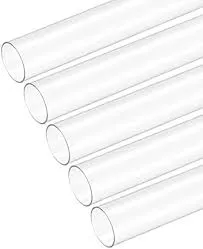Nov . 02, 2024 22:11 Back to list
gas pipe fittings
Understanding Gas Pipe Fittings A Comprehensive Overview
Gas pipe fittings are essential components in any gas distribution system, playing a critical role in the safe and effective transport of gas from one point to another. These components not only connect different sections of piping but also allow for changes in direction, branching, and flow control. In this article, we will explore the various types and functions of gas pipe fittings, their materials, and considerations for safe installation.
Types of Gas Pipe Fittings
1. Elbows Elbows are used to change the direction of gas flow within a piping system. They are available in various angles, the most common being 90 and 45 degrees. The choice of elbow depends on the layout of the installation and the path the gas must take.
2. Tees Tee fittings allow for branching off the main pipeline. They come in two varieties equal tees, which provide two openings of the same diameter, and reducing tees, which connect pipes of different diameters. Tees are critical in creating a system that can distribute gas to multiple outlets.
3. Couplings Couplings are fittings that join two pieces of pipe together. They can be full couplings, which connect pipes of the same size, or reducing couplings, which connect different pipe sizes. This ensures that the system can accommodate varying pipe diameters in different sections.
4. Adapters An adapter is a fitting that allows for connections between pipes of different types or sizes. This is crucial in systems that may incorporate various materials or need to transition between gas and liquid pipelines.
5. Caps and Plugs Caps and plugs are used to seal the ends of pipes. Caps are used for closing off a pipe’s end completely, while plugs can be used in threaded connections. Both are essential for maintenance and safety in gas systems.
Materials Used
Gas pipe fittings can be made from a variety of materials that offer different advantages
gas pipe fittings

- Steel Commonly used for its strength and durability, steel fittings are often hot-dipped galvanized to resist corrosion. - Copper Known for its excellent thermal conductivity and corrosion resistance, copper fittings are frequently used in residential gas systems.
- PVC and CPVC These plastic fittings are lightweight, resistant to corrosion, and commonly used in low-pressure gas systems.
- Brass Often used for its aesthetic appeal and resistance to corrosion, brass fittings are common in residential applications.
Safety Considerations
When installing gas pipe fittings, safety is paramount. Here are some key considerations
- Proper Sizing Ensuring that the correct size and type of fitting are used is crucial for maintaining system efficiency and safety.
- Leak Testing After installation, it’s vital to perform leak tests, using a soapy solution to check for bubbles that indicate escaping gas.
- Regulatory Compliance Always adhere to local codes and regulations regarding gas installations, as these are essential for ensuring safety and legality.
Conclusion
Gas pipe fittings are vital components of any gas installation, providing the necessary connections to ensure efficient and safe gas distribution. By understanding the various types and materials available, as well as adhering to safety considerations, installers can create reliable systems that serve residential and commercial needs. When in doubt, consulting a professional is always the best course of action to ensure that configurations are compliant and safe.
-
High-Quality PPR Pipes and Fittings Durable ERA PPR & PVC PPR Solutions
NewsJul.08,2025
-
Black HDPE Cutting Board - Durable, Non-Porous & Food Safe HDPE Plastic Cutting Board
NewsJul.08,2025
-
High-Quality CPVC Panel Durable HDPE & PVC Panels Supplier
NewsJul.08,2025
-
Double PE Welding Rod Supplier - High Strength, Durable & Versatile Welding Solutions
NewsJul.07,2025
-
High-Quality PVC-O Pipe Supplier Durable 75mm PVC Pipe & Connections Leading PVC Pipe Company
NewsJul.07,2025
-
HDPE Drainage Pipe Supplier – Durable & Corrosion-Resistant Solutions
NewsJul.06,2025

